Abstract
The relative numbers of North-seeking and South-seeking polarity types in natural populations of magnetotactic bacteria were determined at sites on the coast of Brazil. These sites were South of the geomagnetic equator and had upward geomagnetic inclinations of 1-12°. For upward inclinations >6°, South-seeking cells predominated over North-seeking cells by more than a factor of 10. For upward inclinations <6°, the fraction of North-seeking cells in the population increased with decreasing geomagnetic inclination, approaching 0.5 at the geomagnetic equator. We present a simple statistical model of a stochastic process that qualitatively accounts for the dynamics of the two polarity types in a magnetotactic bacterial population as a function of the geomagnetic field inclination.
Full text
PDF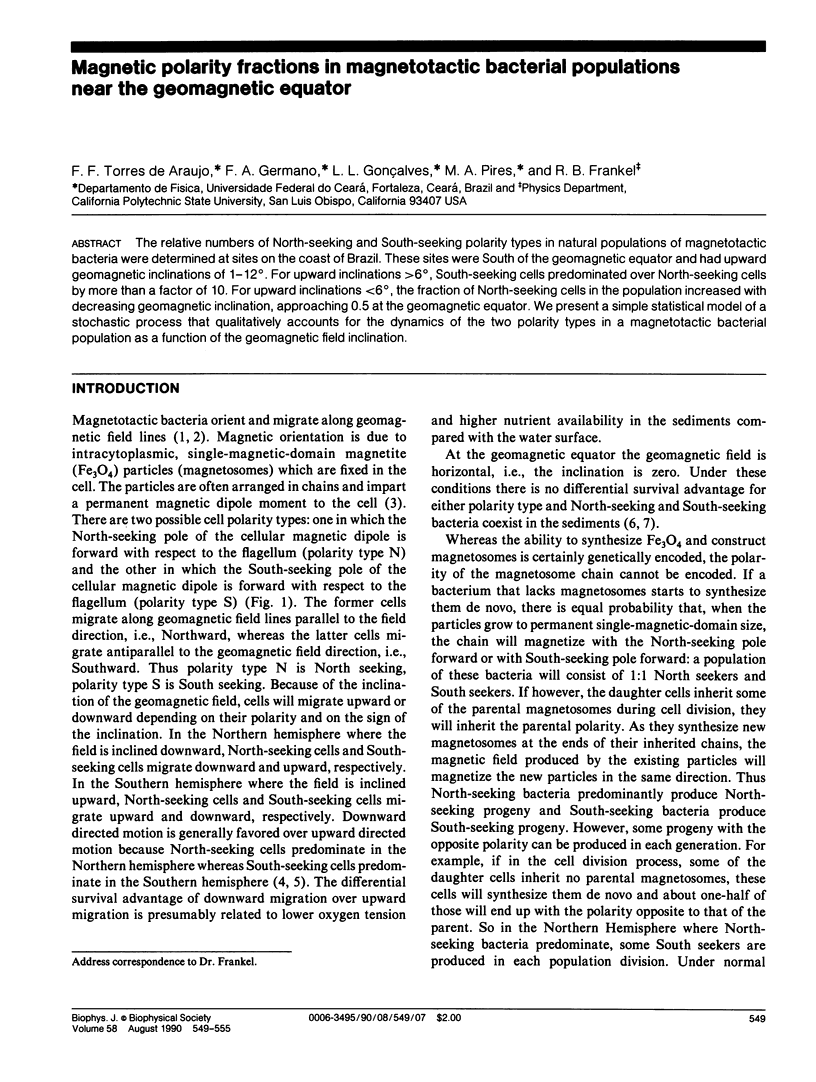
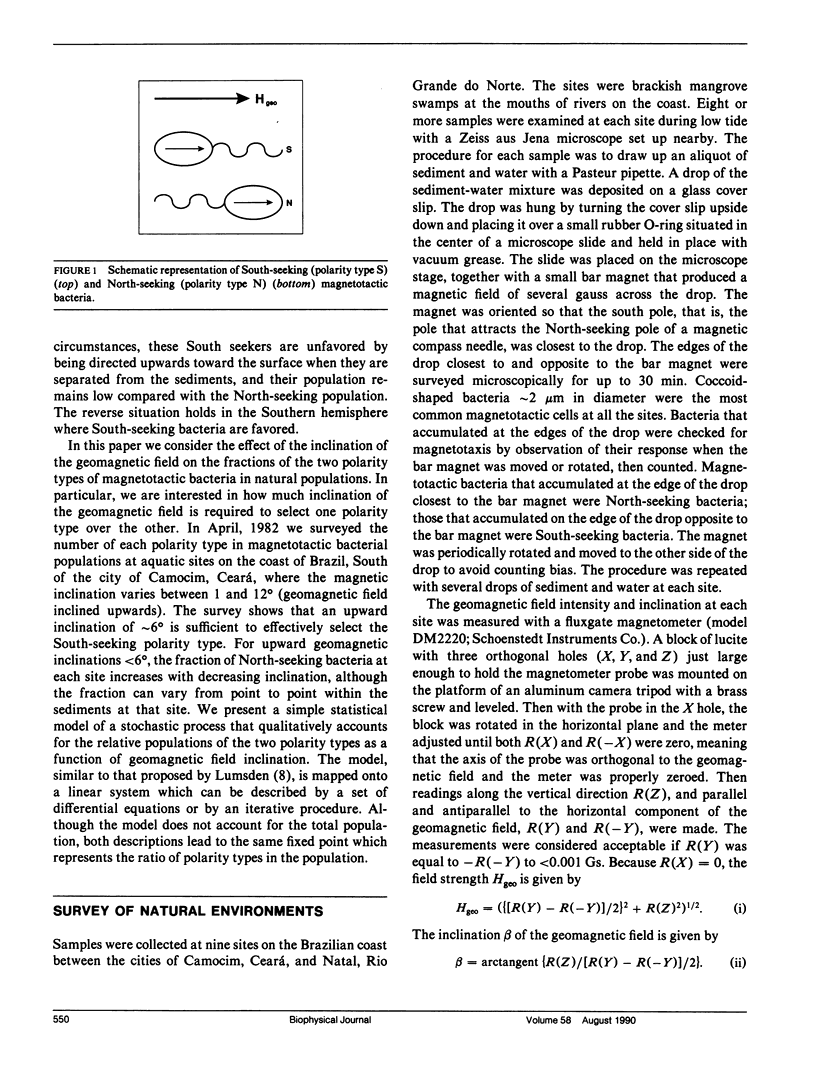
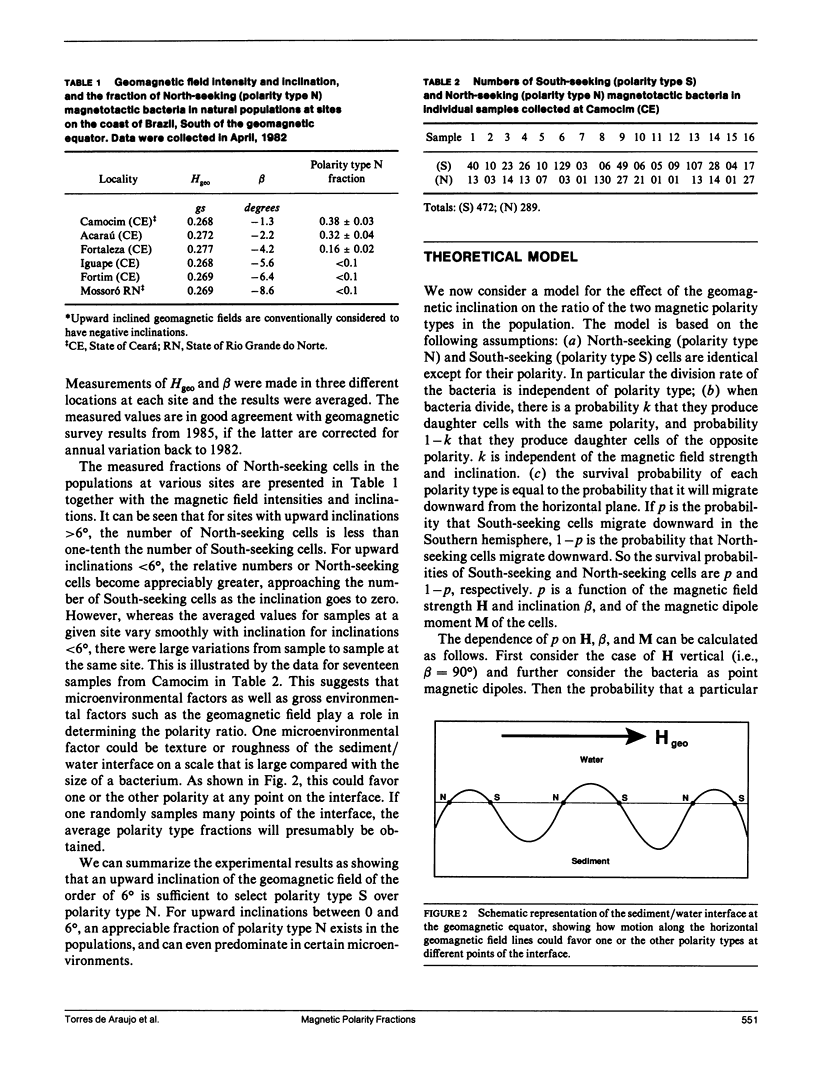
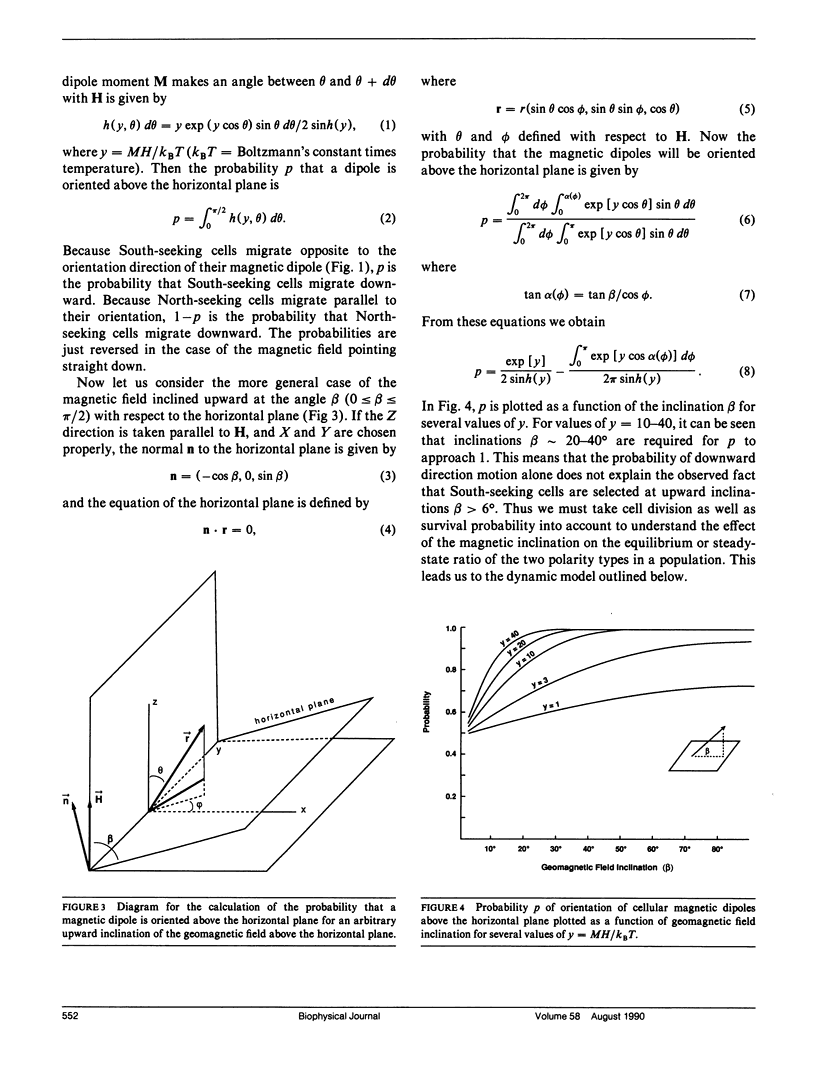
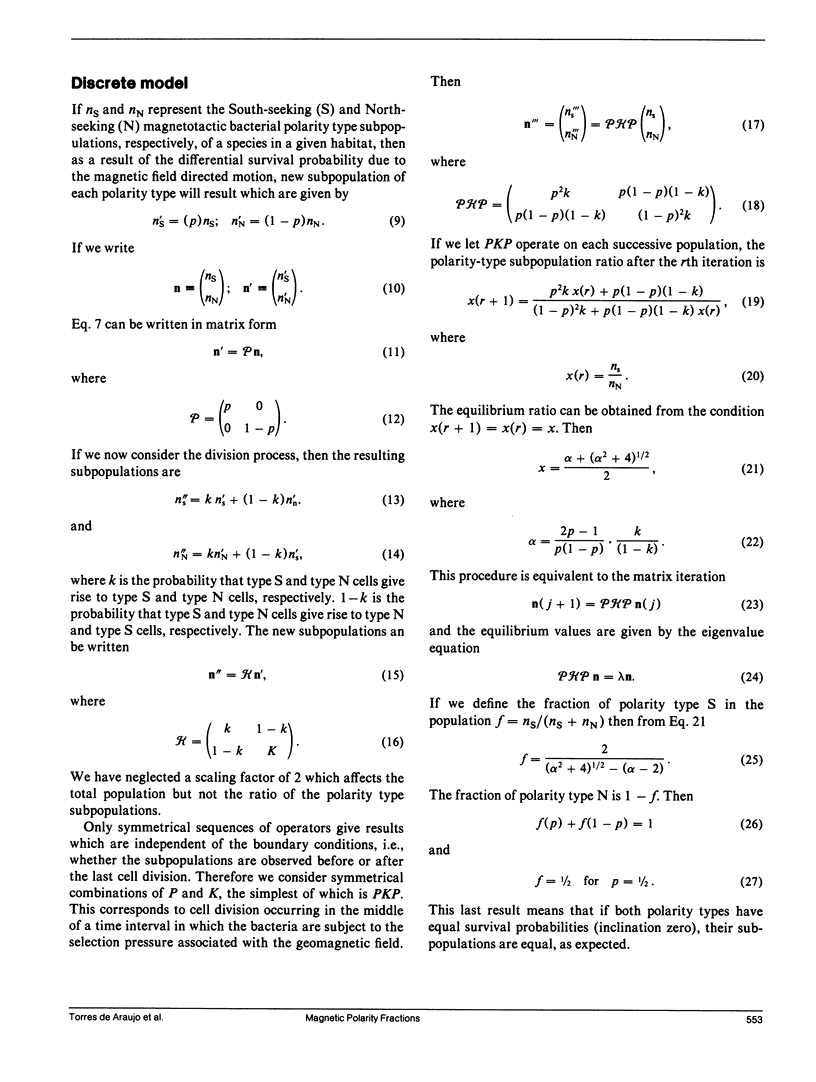
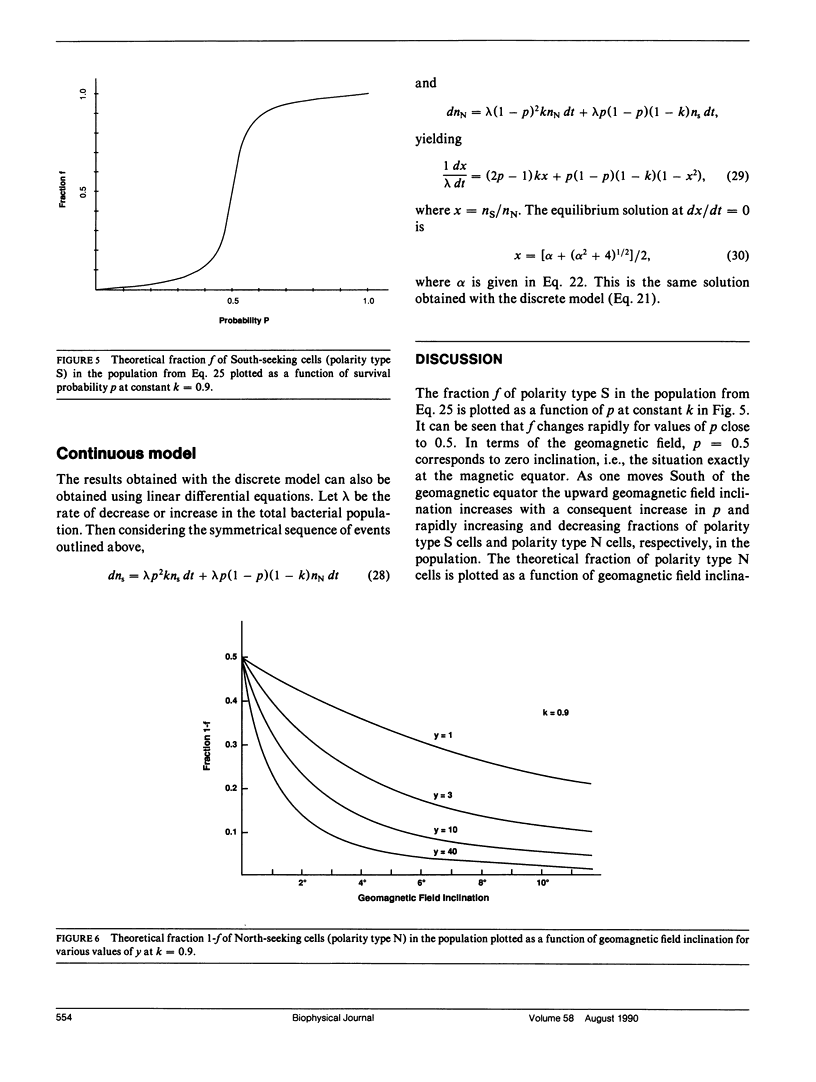
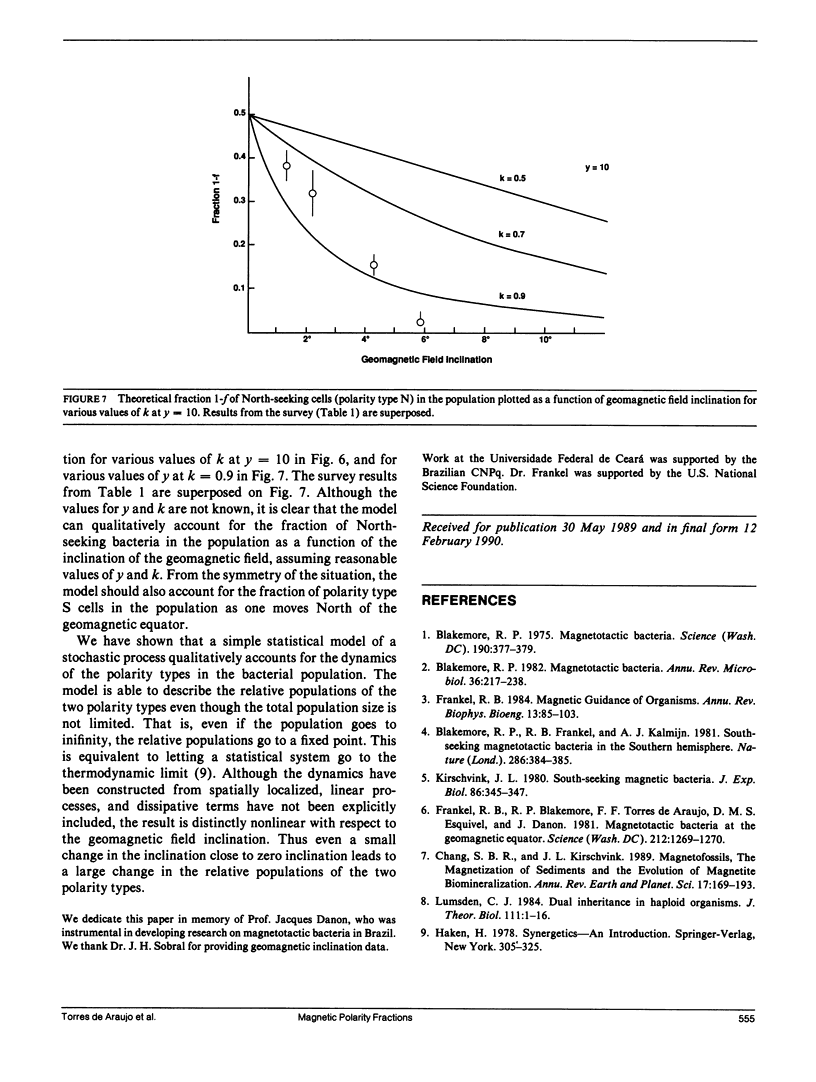
Selected References
These references are in PubMed. This may not be the complete list of references from this article.
- Blakemore R. P. Magnetotactic bacteria. Annu Rev Microbiol. 1982;36:217–238. doi: 10.1146/annurev.mi.36.100182.001245. [DOI] [PubMed] [Google Scholar]
- Blakemore R. Magnetotactic bacteria. Science. 1975 Oct 24;190(4212):377–379. doi: 10.1126/science.170679. [DOI] [PubMed] [Google Scholar]
- Frankel R. B., Blakemore R. P., DE Araujo F. F., Esquivel D. M., Danon J. Magnetotactic bacteria at the geomagnetic equator. Science. 1981 Jun 12;212(4500):1269–1270. doi: 10.1126/science.212.4500.1269. [DOI] [PubMed] [Google Scholar]
- Frankel R. B. Magnetic guidance of organisms. Annu Rev Biophys Bioeng. 1984;13:85–103. doi: 10.1146/annurev.bb.13.060184.000505. [DOI] [PubMed] [Google Scholar]


